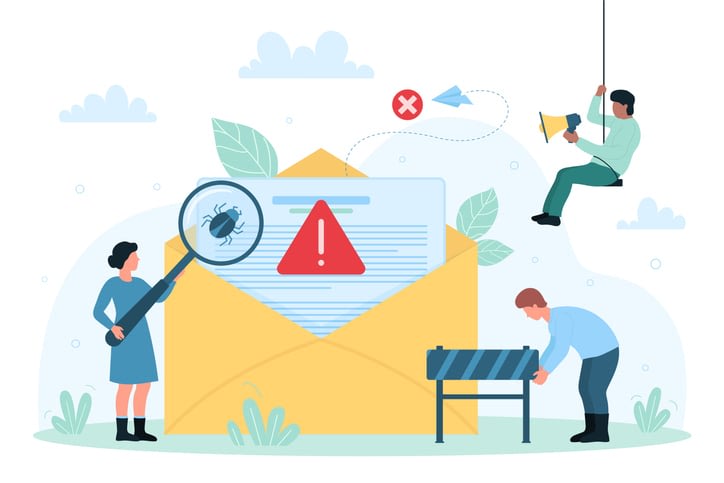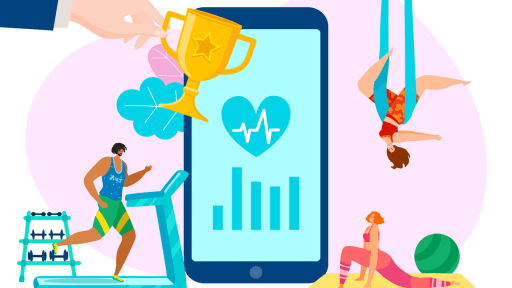Post-meeting follow-ups are critical; they turn discussions into actions and commitments into results. Learn how an effective follow-up from the meeting keeps tasks on track and relationships strong. Expect to find straightforward steps for impactful emails that maintain clarity and focus until the next meeting convenes.
Key takeaways
- Master the art of follow-up emails to solidify business relationships, ensure task completion, and keep everyone informed after meetings.
- Include key components in your follow-up emails: a concise recap of main points, clear action items with assigned responsibilities, and a defined timeline for the next steps.
- Elevate your follow-up emails by sending them timely, personalizing your communication, and keeping the content concise and clear for maximum impact and engagement.
The importance of follow-up emails

In the bustling world of business communication, follow-up emails can make all the difference, especially after business meetings. They are the invisible threads that connect us, weaving conversations into lasting business relationships. After a great meeting, follow-up emails help keep everyone committed and accountable for their responsibilities. They serve as gentle reminders of what was discussed, ensuring that tasks get done and progress is made.
Beyond facilitating task completion, a skillfully composed follow-up email can underscore the gist of the meeting, aligning all attendees with the results and subsequent actions. How do we make our follow-up emails not only efficient but also instrumental in fortifying professional bonds?
Strengthening professional relationships
Imagine ending a business meeting on a high note, and then leaving it at that. Wouldn’t it be like leaving a beautifully brewed coffee untouched? That’s where follow-up emails come in. They serve as the perfect vehicle to carry the momentum forward, fostering goodwill, and showing appreciation for the recipient’s time and consideration. Knowing how to write follow up emails effectively is crucial for maintaining professional relationships and ensuring successful outcomes.
Moreover, follow-up emails can pave the way for a sincere rapport with the contact or prospect by invoking shared interests, especially after a networking event. Such gestures, as simple as they may seem, can enhance rapport and contribute to long-lasting professional relationships.
When drafting your next follow-up email, consider including phrases such as ‘Looking forward to your feedback’ or ‘Hope you have a great week ahead’ to end on a positive note.
Ensuring task completion
Imagine a football team without a game plan or a conductor-less orchestra, chaos, right? That’s what it’s like when there’s no clarity on task assignments post-meeting. Follow-up emails provide that much-needed sense of direction and accountability. They serve as a roadmap, clearly outlining the responsibilities and ensuring goals are achieved.
Whether it’s about hiring contractors or launching a new product, a compelling follow-up email can maximize the impact of any meeting. By succinctly outlining the action items and addressing concerns expressed during the meeting, follow-up emails can ensure tasks are completed as intended.
Keeping everyone informed
In the era of information overload, follow-up emails serve as a lighthouse, guiding everyone towards the important decisions made and the agreed-upon direction. They ensure that those who missed the meeting or need a quick revision are kept informed of the key decisions made.
Incorporating the next meeting date in the follow-up email is also crucial. It creates a reliable routine and provides attendees with a clear reference for the scheduled next meeting, saving them from the inefficiency of searching through numerous emails.
Key components of an effective follow-up email

Crafting an effective follow-up email is akin to preparing a delicious meal; it’s all about getting the ingredients right. A dash of meeting recap, a spoonful of action items, and a garnish of timeline for next steps make for a perfect follow-up email recipe.
However, these components demand more than mere inclusion. Each element calls for meticulous preparation and deliberate articulation. Let’s delve into these fundamental elements and discover how to craft a memorable, effective follow-up email.
Recap of main points
A good recap is like a time machine; it takes you back to the meeting and helps you relive the key moments. By including meeting notes in the follow-up emails, you ensure everyone is on the same page with a concise recap of the main points discussed during the meeting.
But how can you ensure your recap is impactful? Here are some tips:
- Cover the crucial points from the meeting - discussions, focal points, and necessary steps towards objectives.
- Keep the information vivid in everyone’s mind by providing a comprehensive recap.
- Enhance the impact and recall value of your follow-up emails.
Action items and responsibilities

Think of your follow-up email as a compass, directing the team towards their responsibilities. Clearly outlining action items and assigning responsibilities helps your team stay organized and focused on their tasks.
It’s not just about assigning tasks; it’s about empowering team members and promoting collaboration. By delegating responsibilities, you create opportunities for growth and learning, enabling managers to focus on strategic activities and enhancing team accountability.
Timeline and next steps
A follow-up email without a timeline is like a ship without a compass—it’s easy to lose direction. By providing a clear timeline for the next steps, you ensure that everyone is on the same page and motivated to meet deadlines.
However, a timeline transcends a mere list of dates. It visually depicts your team’s roadmap, clarifying the direction and necessary actions to reach the goal.
While crafting your next follow-up email, ensure to write a follow-up with an explicit and comprehensive timeline.
Tips for crafting the perfect follow-up email

Having integrated all the primary elements, let’s enrich our follow-up email formulation with some valuable pointers. Being timely, personalizing the message, and keeping it concise and clear can make all the difference in crafting the perfect follow-up email.
But, these aren’t just garnishes to be sprinkled on top. Each tip is a key ingredient that adds flavor to your follow-up email, makes it more engaging, and ensures it gets the response it deserves. Let’s delve further into each of these suggestions for a detailed understanding.
Be timely
Timing is everything. It’s the secret ingredient that can turn a good follow-up email into a great one. Sending follow-up emails within 24 hours of the meeting ensures the information is fresh in everyone’s mind and increases the likelihood of a positive response.
However, promptness transcends the mere speed of sending the email. It reflects your dedication and professionalism. By sending a prompt follow-up email, you demonstrate your promptness and seize the opportunity before the recipient proceeds with other options.
Personalize your message
Personalization is the spice that adds warmth to your follow-up email. By personalizing the message and addressing the recipient by name, as well as referencing specific details from the previous conversation or meeting, you can show genuine interest and care. Crafting a compelling subject line can also greatly increase the chances of your follow-up email being opened and read.
Yet, keep in mind that excessive personalization can be as detrimental as its absence. Avoid common mistakes like sending the email to an incorrect segment or addressing the recipient with the wrong first name. With the right balance, personalization can boost your professional relationships and make your emails stand out.
Keep it concise and clear
Clarity and brevity are the salt and pepper of your follow-up email. Keeping the follow-up email concise and clear shows respect for the recipient’s time and makes sure the message is easily understood.
A long, meandering email can be overwhelming and may lose the reader’s interest. However, keeping your follow-up email between 50 to 125 words makes it brief yet informative, increasing the chances of it being read and acted upon. And remember, a pinch of clarity goes a long way!
Utilizing Kumospace for seamless meeting follow-ups
Utilizing Kumospace for seamless meeting follow-ups involves leveraging its unique features to enhance post-meeting engagement and ensure effective communication. By simplifying the capture, organization, and sharing of meeting content, Kumospace makes tracking progress and focusing on key topics a breeze. Let’s discover how Kumospace can enhance the efficacy and efficiency of your follow-up emails. Here are some key strategies:
- Interactive meeting spaces:
- After a meeting, use Kumospace's customizable virtual office to create follow-up zones. These areas can be dedicated to specific discussion points or action items from the meeting, encouraging attendees to revisit and engage with the content in a more focused manner.
- Spatial audio and video features:
- Take advantage of the platform's spatial audio and video to facilitate natural, post-meeting conversations. These features allow for more personal and engaging follow-ups, as participants can break into smaller groups or one-on-one discussions, mimicking real-life networking.
- Integrated tools and resources:
- Utilize Kumospace's ability to integrate with other tools and resources. Share follow-up materials, such as meeting minutes, presentations, or action plans, within the platform. This centralizes information and makes it easily accessible to all participants.
Meeting follow-up email templates for various scenarios

Having acquired proficiency in concocting follow-up emails, it’s time to put our skills into practice. Here, we present to you some follow-up email templates tailored for different meeting scenarios, including internal team meetings, sales meetings, and customer meetings.
These templates are more than mere fill-in-the-blank formats. They’re intended to motivate and serve as a foundation for creating your distinct and persuasive follow-up emails with a compelling subject line. So, let’s gear up and set the ball rolling!
Internal team meeting follow-up
An internal team meeting follow-up email is like a team huddle after the game. It’s where you recap the meeting, discuss action items, and strategize on next steps.
But remember, your team is not a monolith. Each member brings unique strengths and perspectives to the table. By acknowledging everyone’s participation and contributions, you can boost engagement and morale, making your follow-up email a tool for team-building.
Sales meeting follow-up
A sales meeting follow-up email is like a sales pitch—it needs to be compelling. It should highlight your value proposition, agreed-upon action items, and a proposed timeline for next steps.
But more than anything, it should leave a lasting impression. By showcasing your professionalism and commitment, you can enhance your relationship with the client and set the stage for future communications.
Customer meeting follow-up
A customer meeting follow-up email is like a thank you note—it shows your appreciation and underscores the value of the relationship. It’s where you thank the customer for their time, recap the discussion, and outline any agreed-upon action items or next steps. A follow-up conversation can also be a valuable tool to ensure that all parties are on the same page. Additionally, a follow-up message can serve as a reminder for any pending tasks or commitments.
But remember, your customer is not just a business contact—they’re a person. By including a personal touch, you can show your genuine interest and care, making your follow-up email more engaging and impactful.
Summary
In the bustling world of business, crafting effective follow-up emails can make all the difference. They can strengthen relationships, ensure tasks are completed, and keep everyone informed. And with tools like Kumospace at your disposal, you can supercharge your meeting follow-ups and keep the momentum of your meetings going, long after they end. So, next time you wrap up a meeting, remember to follow up—it’s the secret ingredient to success.
Frequently asked questions
After a meeting, it's important to send a follow-up email expressing gratitude, summarizing key points, and confirming the next steps. Make sure to personalize the email and send it promptly to stay top of mind. This will show your professionalism and keep the momentum going.
Kumospace's customizable spaces can be used to create dedicated zones for focused post-meeting engagement on specific discussion points. Its spatial audio and video features facilitate natural, small group, or one-on-one discussions, mimicking in-person interactions. Integrating other tools within Kumospace allows for centralized access to follow-up materials, enhancing efficiency. Additionally, the platform's scheduling capabilities and interactive features like polls ensure streamlined coordination and immediate feedback collection.
The meaning of follow-up to the meeting is to conduct activities after the meeting, such as sending out meeting notes, collecting feedback, and scheduling dedicated follow-up meetings to check progress. It's important to ensure that the decisions and actions from the meeting are effectively implemented.
The key components of an effective follow-up email include a recap of the main points, a detailed list of action items and responsibilities, and a clear timeline for the next steps. This will ensure clarity and accountability in the communication process.
Absolutely! To craft the perfect follow-up email, be timely, personalize the message, and keep it concise and clear. Happy writing!





